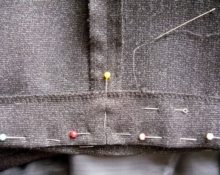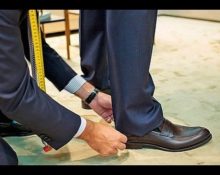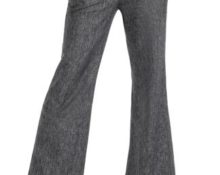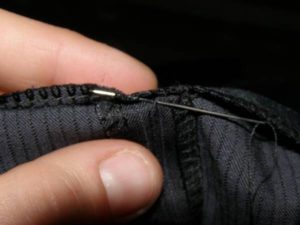 When updating your wardrobe, sometimes it happens that the trousers do not fit. The legs turn out to be too long and fold into an ugly accordion around the foot. In this case, it is not necessary to refuse to purchase the desired classic product. You can hem your trousers yourself by hand, without special cutting and sewing skills. The most effective way is a hidden seam.
When updating your wardrobe, sometimes it happens that the trousers do not fit. The legs turn out to be too long and fold into an ugly accordion around the foot. In this case, it is not necessary to refuse to purchase the desired classic product. You can hem your trousers yourself by hand, without special cutting and sewing skills. The most effective way is a hidden seam.
We hem the trousers by hand using a blind seam
Classic trousers have long secured their position in any wardrobe. They form the basis of a school uniform or business attire for adults. When purchasing, you may encounter a problem: the trousers fit perfectly, but the legs are too long. This problem can be easily corrected at home, without resorting to the help of specialists in the studio.
Preparatory process
Before starting work, you need to prepare the necessary materials and tools. Timely preparation will help save time and complete the sewing process faster.
Required tools:
- sewing meter;
- ruler;
- safety pins;
- chalk or pin pencil;
- needles;
- threads to match the product;
- scissors;
- iron.
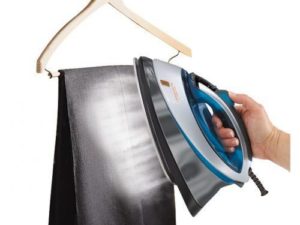 If the product has just been purchased, it is recommended to decatify it. This will help you get the right fit and prevent the fabric from shrinking after washing. To decatenate, it will be enough to treat the lower part of the trousers with steam or slightly wet them and run the hot iron platform several times. You can also simply wet your pants and let them dry on their own.
If the product has just been purchased, it is recommended to decatify it. This will help you get the right fit and prevent the fabric from shrinking after washing. To decatenate, it will be enough to treat the lower part of the trousers with steam or slightly wet them and run the hot iron platform several times. You can also simply wet your pants and let them dry on their own.
Technological process
Reference! This method is suitable for any classic straight trousers.
After decating, you can start hemming. First you will need the required trouser length measurements. They can be removed from another product that has a similar fit and cut. We turn the product inside out, fold the trouser leg to the trouser leg and place it on a hard and flat surface. We measure the crotch seam with a sewing meter and mark the required number. We also lay out the pants on the surface, measure them and put a mark. This can also be done on the outside of the product. Using a ruler, measure the corners and draw a straight line. Thanks to some simple steps, we got the required length.
Important! When measuring directly on the body, take them in shoes, the length should be approximately to the middle of the heel.
From the resulting line we set aside approximately 3 cm. This fabric is used directly on the hem for laying the seam. Draw a straight line using chalk and a ruler. Now you can cut it off. The cut edges can be processed using an overlocker; otherwise, they can be overcast by hand. The edge of the product is neat, without protruding threads. This treatment will help in the hemming itself. It is along this that the hidden seam is laid.
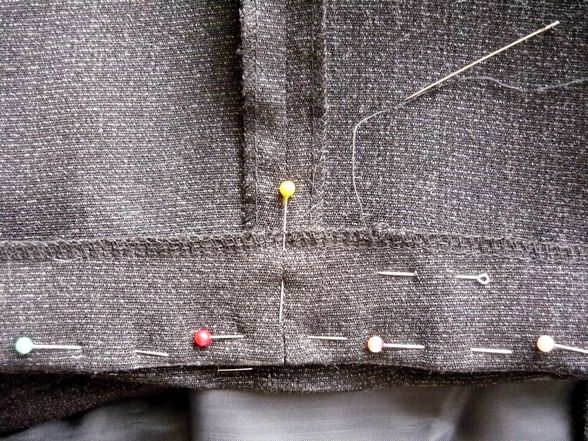
Turn the pants inside out. According to the measurements, carefully bend the bottom and pin it with safety pins. They will securely fix the fabric and prevent it from slipping during processing. Now you can start manual filing.
Attention! When fixing with pins, carefully ensure that the side seams match.
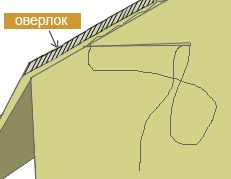 It is better to hem by hand using one thread with an invisible seam. To ensure that the seam is not noticeable from the front side, the thread should be thin and the needle sharp, without any snags. We insert the needle into the stitch of the overlock or overcast seam, grabbing 2 threads of the trouser leg. In this way, we carefully process the hem of the trouser leg along the entire diameter, gradually removing unnecessary pins.
It is better to hem by hand using one thread with an invisible seam. To ensure that the seam is not noticeable from the front side, the thread should be thin and the needle sharp, without any snags. We insert the needle into the stitch of the overlock or overcast seam, grabbing 2 threads of the trouser leg. In this way, we carefully process the hem of the trouser leg along the entire diameter, gradually removing unnecessary pins.
Finally, carefully iron the seam from the wrong side. The length is shortened and the trousers are ready. Minimal time and simple steps will help you hem your trousers by hand.
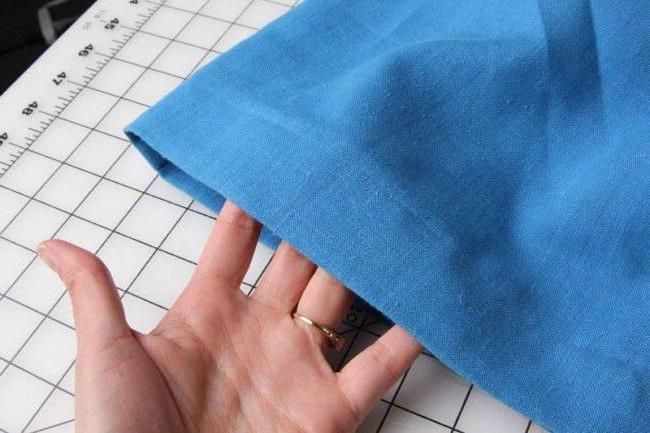
Useful tips
There are a few tips you need to know before going through the process. They will help you carry out competent work on manual hemming and avoid errors.
- Natural fabrics tend to “shrink” after washing. In this case, decating is necessary before hemming.
- If you don't have an overlock foot, a zigzag stitch is suitable for processing.
- For more comfortable cutting of excess fabric, it is recommended to use a special sewing cutter.
- When cutting, grab both halves of one pant leg at once to avoid mismatching of the halves.
- When hemming men's garments, experts recommend additionally using braid.
- When hemming children's classic trousers by hand according to the pattern, it is necessary to leave 4–5 cm. This segment will help make the product longer when the child grows quickly.
- It is better to take measurements directly on the body. To get accurate numbers, you need to try on the trousers immediately in the shoes with which you are going to wear the product.
- When carrying out the ironing process after hemming, it is necessary to iron only the edge itself. It is not recommended to go into seams. The hot bed of the iron may leave seams on the front side of the product. It is very difficult to get rid of them.
- The optimal length for men's trousers is considered to be the length to the middle of the heel. Women's products are shortened to approximately the middle of the heel.
Conclusion
Classic straight trousers are a must in every wardrobe, regardless of whether they are men's, women's or children's. A product you like may often turn out to be a little longer than necessary. In this case, there is no need to refuse the purchase. You can hem your trousers yourself by hand. This method will help you adjust the product and obtain the required length. Following tips and recommendations will eliminate errors and help make the process enjoyable and educational.


 0
0